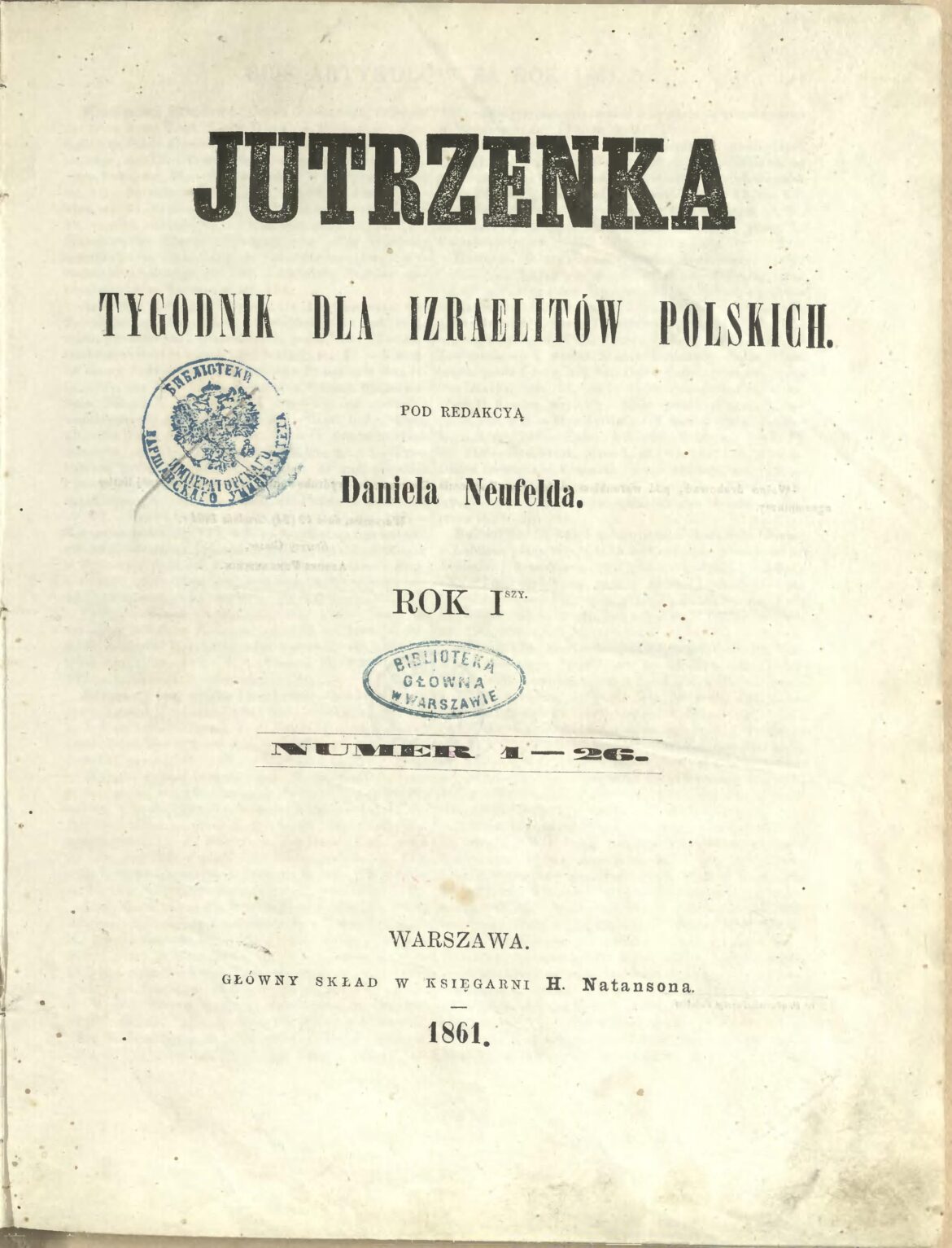The 19th century was a period of industrialisation of the Polish territories and modernising changes that took place in Polish society. Those processes had an impact on the Jewish minority. The Jewish intellectual elite realised that it was still possible to exist in their isolated community, but this harmed the Jews.
The first ideas aimed at modernising the Jewish community involved following the models that had worked in Germany. This was the Haskalah movement. As part of this, in the 1830s reform circles planned the construction of a so-called German synagogue in Warsaw. The implementation of the project stretched over schedule. The building, where sermons were delivered in German, was finally completed in 1849. It was located on Daniłowiczowska Street and functioned until 1878.
Subsequent reformist concepts assumed assimilation into Polish society. The assimilationists were not a homogeneous group. Their demands included reforming the traditional Jewish self-government, raising the level of education, changing some Jewish customs (e.g. attire) and obtaining such civic rights as the Christian population had. Differences in this milieu were outlined in relation to the degree of postulated openness to Polish society, and the role of the Polish language and the secularisation of schools.
Advocates of full integration, but not of religion per se, were active especially in the 1860s. During the period of the post-Sevastopol thaw, which followed Russia’s defeat in the Crimean War and the January Uprising, the so-called nationally conscious part of Polish society also opened up to contacts with the Jewish community. Aleksander Wielopolski (1803-1877), who wished to modernise the country on the basis of the urban state, sought to cooperate with the Jews. He was an extremely influential official in the Kingdom of Poland before the outbreak of the January Uprising.
The assimilationists most closely associated with Polish society proclaimed the idea that the aim of integration was to create a layer of Poles of the Mosaic faith in Polish society. They preached these views in the press, which was the most modern means of social communication at the time. The magazine published by this milieu was titled ” The Dawn”. Its name was not accidental – it expressed hope for the beginning of a new period in the life of the Jewish community in Poland.
The paper’s editor-in-chief was Daniel Neufeld (1814-1874), and the editorial board also included Jakub Rotwand (1818-1913) and other graduates of the Warsaw Rabbinical School (1826-1861). The magazine was published between 1861 and 1863, with a total of 121 issues. The first thirteen were printed in the printing house of Aleksander Gans, the next ones in the printing house of “Gazeta Polska”. Like all other magazines in the Kingdom of Poland, ” The Dawn” was subjected to preventive and repressive censorship by the Russian authorities. The magazine was distributed by Henryk Natanson’s bookshop and later by Michał Glücksberg’s store. Both were located on Krakowskie Przedmieście Street in Warsaw. The basic method of distribution was subscription, the price of which depended on the recipient’s place of residence. In the years 1861-1862, the subscription in Warsaw cost 20 zlotys or 3 roubles per year, and in the provinces 24 zlotys (3 roubles 60 kopecks), while outside the borders of the Kingdom of Poland it was 37 zlotys 10 groschen (5 roubles 60 kopecks). The newspaper enjoyed a high readership, as evidenced by the increase in its volume from 8 to 14 pages. “The Dawn” was published in Polish, while Hebrew font was used to write Jewish names.
“The Dawn” was divided into the following sections: official news, especially concerning the Jews, and information about upcoming Jewish holidays and the obligations deriving from them. The newspaper also contained: introductory articles, scientific and theological treatises and columns on social issues, reprints of excerpts from rabbinical works, information from various institutions (scientific, religious, social), columns on history, law, industry and trade, agriculture, biographies, correspondence, reviews of writings, poetry and so-called miscellany.
The assimilationist direction of the paper was evident in the language and choice of content. “The Dawn” reported on the fate of rabbis sentenced to exile or forced to leave the Kingdom of Poland as part of repressions for showing solidarity with Poles taking part in patriotic-religious manifestations preceding the outbreak of the January Uprising. Information was provided about services attended by rabbis teaching in Polish. Correspondence from the provinces was printed, sent by people trying to spread the idea of integration with Poles outside Warsaw. In addition, “The Dawn” also undertook publishing initiatives, such as promoting the publication of “The Prayer Book for Polish women of Mosaic faith”, published by Henryk Natanson, and the translation of the Pentateuch into Polish.
The magazine was closed down in October 1863 by the Russian authorities, opposed to the Polish-Jewish agreement. Daniel Neufeld was exiled to Chelyabinsk in the Urals for two years.





